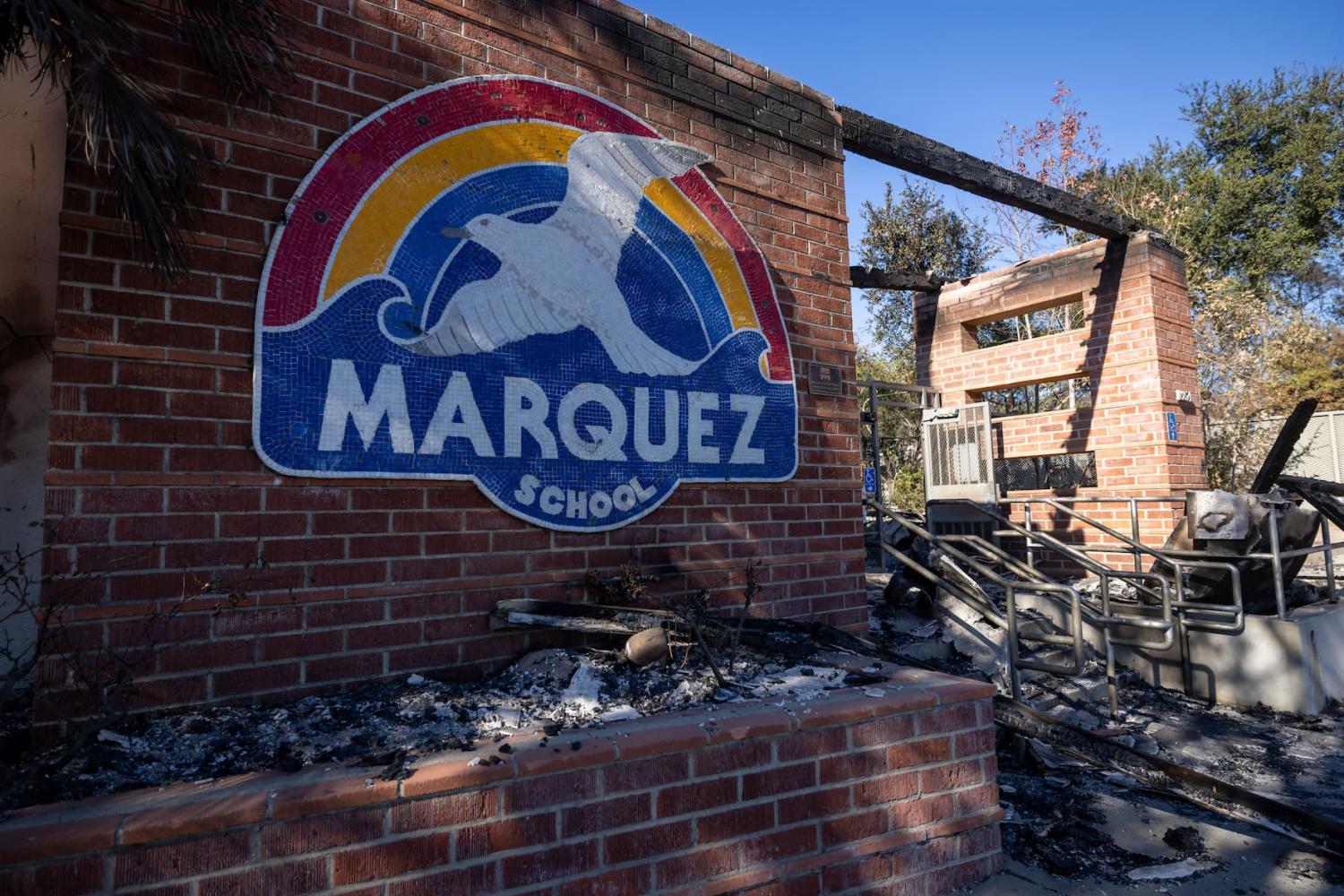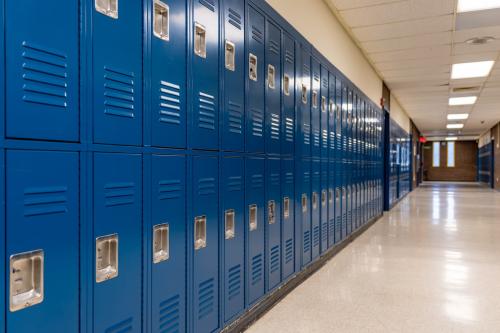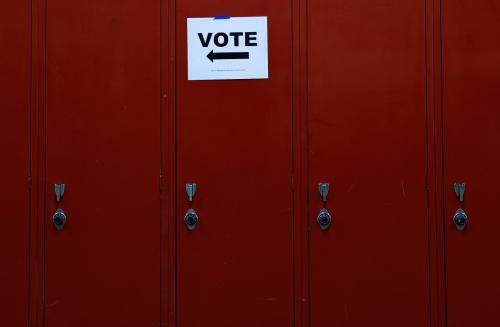The United States is facing a dual crisis in declining educational outcomes and escalating climate impacts.
Student achievement has dropped to its lowest level in a quarter century and the pandemic-era spike in chronic absenteeism has largely persisted. Strengthening the nation’s pre-K-12 education system is essential — not just for individual opportunity, but also for broader economic prosperity and innovation.
Climate change is also placing mounting pressures on our country in ways that are impossible to ignore. In 2023, the U.S. experienced a record number of billion-dollar weather disasters, driving up home insurance rates and leading insurers to drop coverage entirely in many of the hardest-hit regions. Last year marked the nation’s hottest on record, with extreme heat waves ballooning emergency room visits and sending electricity bills soaring. Toxic smoke from wildfires in California and Canada has traveled hundreds of miles, blanketing major cities and turning skies orange. In the Southwest, worsening droughts are forcing municipalities to impose water restrictions, while in coastal areas like Florida, sunny-day flooding regularly inundates streets during high tides.
These urgent challenges may appear unrelated. However, the body of evidence we synthesize in a new paper suggests otherwise. Climate change is increasingly disrupting the core operations of America’s pre-K-12 schools, affecting everything from student attendance and achievement to the physical infrastructure and financial stability of school districts.
Yet schools are not only vulnerable to climate impacts, they are also uniquely positioned to be part of the solution. By taking steps such as reducing building emissions, integrating climate science into the curriculum, expanding outdoor education, and preparing students for careers that advance sustainable practices, schools can play a central role in creating a heathier, more resilient future.
A successful 50-state strategy means embracing multiple approaches. There are opportunities for districts in red and blue states alike to strengthen educational outcomes and environmental stewardship in ways that benefit their bottom lines and reflect their own local priorities.
How climate change is disrupting schools
For students to be able to thrive, schools need to open reliably and provide safe and healthy learning environments. But climate-fueled extreme weather events are increasingly compromising schools’ ability to perform these basic functions.
Drawing on risk estimates from FEMA, we find that a quarter of pre-K-12 schools are now located in census tracts designated very high-risk for at least one out of 11 different environmental hazards. The table below allows readers to look up the specific climate hazards that individual K-12 public schools face right now (view the table on its own page here).
The 2024-25 school year alone saw over nine million students affected by closures or activity cancellations due to extreme weather events including heatwaves, flooding, hurricanes, and wildfires, according to data collected by UndauntedK12.
Last September, Hurricane Helene kept 76,000 students in western North Carolina out of class for over a month due to storm damage. This January, wildfires destroyed at least a dozen K-12 schools in Los Angeles and caused widespread school closures affecting hundreds of thousands of students. Heat waves are now forcing schools across the Midwest and Northeast to close annually due to a lack of adequate air conditioning and schools in the Southwest to cancel outdoor recess due to the threat of heat stroke and contact burns from playground equipment.
Climate-related events are also disrupting teaching and learning, limiting schools’ ability to prepare students with the academic foundations essential for future success. A compelling body of evidence documents how climate-induced extreme weather harms students’ achievement and attainment—through school closures, increased absenteeism, and the adverse learning conditions they cause—as well as through negative health and economic effects on students, families, and communities.
More resilient, sustainable schools can help
Making schools more resilient to natural disasters, extreme temperatures, and poor air quality can benefit students and reduce long-term costs for districts.
Locally tailored investments such as HVAC upgrades, fire-resistant roofing, flood-resilient landscaping, and heat-mitigating infrastructure would help to buffer students from the ill effects of climate change and reduce costly weather-related closures and damage. Energy-efficient upgrades can also lower schools’ operating costs. And because schools often double as emergency shelters, these infrastructure investments can benefit entire communities.
The planet would win, too. Public schools represent one of the largest infrastructure systems in the United States, with nearly 100,000 buildings totaling 7.8 billion gross square feet. Estimates place the annual carbon emissions of the U.S. K-12 public school system at roughly equivalent to 18 coal-fired power plants or 15 million cars. Reducing school emissions alone won’t stop global warming, but these efforts could become a market driver for innovation around sustainable building and clean energy.
Unfortunately, school districts’ dependence on local funding to cover 82% of the costs of capital projects has led to systematic underinvestment in school infrastructure. Large differences in local tax bases also create inequities in the health and safety of school infrastructure, further compounding unequal learning opportunities that cut across racial and socio-economic lines. Targeted state and federal support for capital improvements—such as matching grant funds and credit enhancement for local bonds—hold promise for accelerating investments and reducing inequities.
When schools need to close because of natural disasters or other climate events, having emergency protocols, established communication plans, and remote-learning technology and strategies that build on the lessons learned during the pandemic would also go a long way toward mitigating harm.
How schools can prepare students for a changing climate and economy
There is support across the political spectrum for strengthening STEM and career education, key avenues through which pre-K-12 schools can respond to climate change. However, U.S. schools are doing a poor job at teaching the basic science necessary to understand climate change.
American 15-year-olds’ knowledge of environmental science ranked below that of 24 other countries on the 2015 PISA science exam, far lower than countries that have similar overall science scores. This suggests that environmental science is a particular weakness of U.S. science education. In 2019, nearly half of U.S. teens reported learning “a little” or “nothing” about the causes of climate change in school.
Climate education remains at the periphery for multiple reasons beyond it being a political wedge issue. The vast majority (88%) of state science standards on climate change are concentrated at the high school level, leaving K-8 students with little exposure to climate education. Climate change standards in high school are most often incorporated into elective rather than required courses such as Environmental Sciences and Earth and Planetary Systems. Widely adopted science and history textbooks dedicate few, if any, passages to climate change and often do not represent the overwhelming scientific consensus. U.S. teachers also report not having the time, knowledge, instructional materials, or professional support to teach about climate change.
Here, concerns about politicizing schools and proselytizing about controversial issues abound. But failing to teach students about the scientific evidence identifying the causes and consequences of our warming planet ignores their own lived experiences and leaves them without the tools they need to adapt to and address these challenges. Despite pre-K-12 schools’ inadequate coverage of the topic, students’ growing concern is clear: 58% of youth ages 16 to 25 say they are “very” or “extremely” worried about climate change.
There also exists widespread support for climate education in the United States. Multiple nationally representative surveys find between 77% and 81% of adults support teaching about climate change in schools. Sixty-six percent of people say that U.S. schools should do more to teach about climate change.
Schools have an opportunity to respond not only through science instruction but also through career and technical education (CTE). Already, 29 states that span the political spectrum offer CTE programs for careers in the green economy. Expanding these pathways can prepare students for employment in high-growth fields in clean energy, the building trades, and environmental management that are major employers in many conservative states.
States and districts can lead the way
Despite federal programs and incentives to support this work being rolled back under the current administration, momentum is building at the state and local levels.
Districts such as Boston, Denver, Los Angeles, New York, Salt Lake City, Santa Barbara and Virginia Beach have developed climate action plans and dedicated environmental sustainability offices. California, Connecticut, Maine, Maryland, New Jersey, and Washington are integrating environmental and climate education across state standards and investing in professional development and curricular resources for teachers. The Colorado state legislature recently approved a high school endorsement in climate literacy.
We need to see education reform and climate solutions as complementary goals. While some may dismiss these efforts as an attempt to inject a political agenda into our education system, they are, in fact, a pragmatic response to the interrelated challenges facing schools and communities across the country. Better education policy can raise academic achievement and contribute to a healthier planet.
The Brookings Institution is committed to quality, independence, and impact.
We are supported by a diverse array of funders. In line with our values and policies, each Brookings publication represents the sole views of its author(s).









